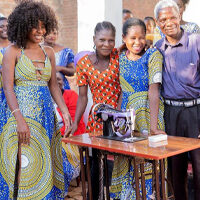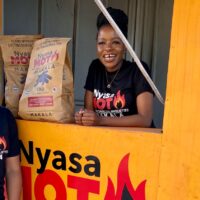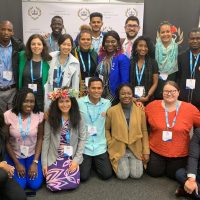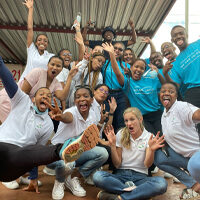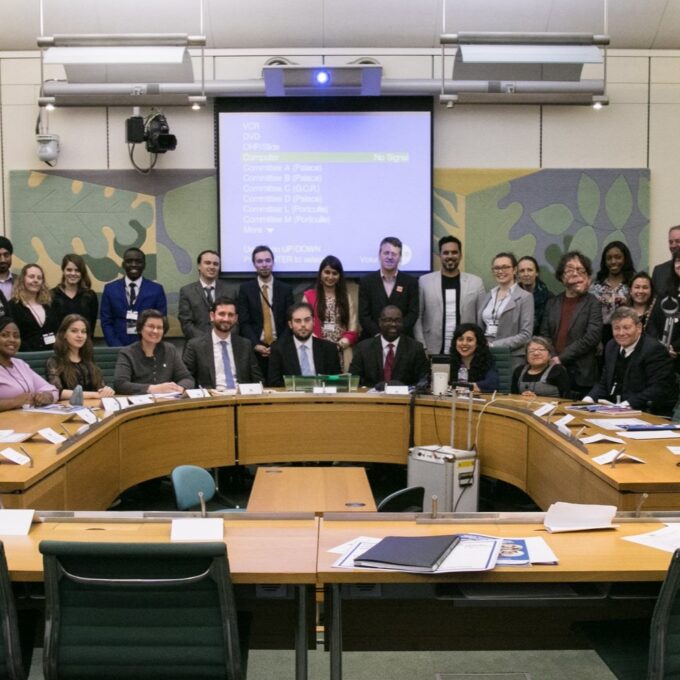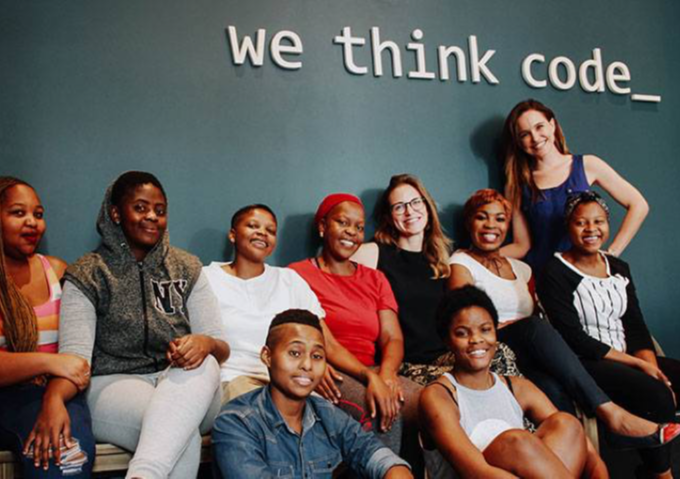By Ellie Besley-Gould and Katrin McMillan
Currently there are 121 million children without access to education. There are 69 million too few teachers to hit country education targets and even if we combined the entire global budget for education, we wouldn’t come close to reaching every child. It is clear that the traditional approach to tackling the education deficit does not work – we need an affordable, scalable and world-class solution for ALL children, no matter where they were born or where they live.

Good news is, we have a solution. With Hello World, there is potential for children to learn and explore a global body of knowledge, right in the centre of their community, wherever they are in the world, even in the absence of teachers and schools.
Access to the world
If you have access to the internet, you have access to the world. However, getting Wi-Fi in certain parts of the world can be a challenge to say the least! It was clear then that any solution we came up with would need to be able to overcome this. At the same time we had been inspired by educational researcher Sugata Mitra’s ‘Hole in the Wall’ project which delves into children’s ability to learn and teach themselves. It was these thoughts and challenges that got our Founder and CEO, Katrin McMillan, thinking about how she could turn her own obsession with ending the education deficit into something that would deliver real social change. Collaborating with coders, designers, researchers and engineers, she started to shape a solution that if successful, would have the potential to take education to all children regardless of a lack of schools, books or teachers. Hello World was born, and with it, the Hello Hub.
Built for the community, by the community
The Hello Hub is a solar-powered outdoor Internet kiosk, with state-of the art technology including high quality solar panels, satellite connectivity and 8 weatherproof touchscreen ipads, camera and audio equipment. One Hub can provide unlimited internet access for over 1500 people.
By connecting communities to the internet, the Hub opens up access to the vast number of resources available online, including vocational education and business-related best practices. Each hub provides access to preloaded educational material plus apps and tools for teachers. By working closely with partners and local education providers, we have been able to develop lesson plans and supporting materials for classes empowering individuals to go out and teach those who otherwise would have missed out on education.
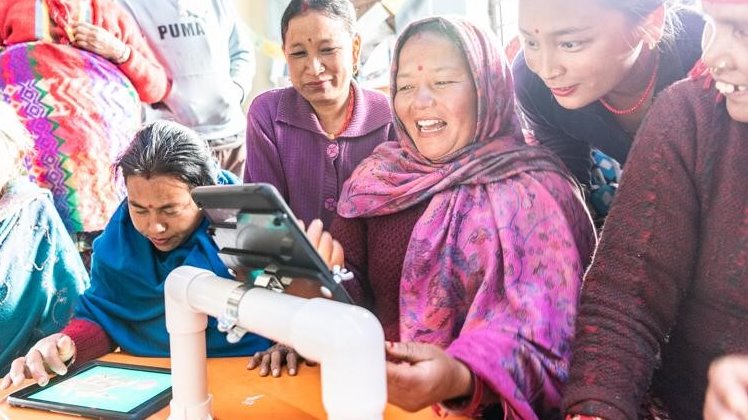
It is important to us that any solution we find is self-sustaining, empowering and ultimately mobilising communities to create their own change. One of the most important things that we have learnt is that mutual investment in the cause, and a real sense of collaboration between us and the community, is essential for creating successful ventures.
This is why we approach all communities as partners and insist that we work together to build their Hello Hub.
Not only are we empowering the local community to take control of their future, but we are also creating engineers and advocates who will go on and share their knowledge with others. In an outdated sector, this is a truly innovative approach to addressing educational development needs, particularly in poorer parts of the world.
Constantly learning
We now have a total of 9 live hubs; one in Suleja, Nigeria, four in Uganda and four in Nepal. Excitingly our Hello Hubs are being used by their communities nearly 19 hours a day on average.
The Hello Hubs are designed to constantly collect data allowing us to better understand who uses them, what they are used for, and also what impact they have on the users. Current findings show that most of the Hello Hub users are children, three quarters of whom are of school age. Of those, 25% have had no formal schooling. It is exactly these children that Hello World exists to reach and inspire with educational resources. 98% of Hello World community members say that the project has positively improved their lives.
Taking a pause
Despite our early successes, Hello World wasn’t quite ready to scale. Our first kit was too pricey and the Hubs weren’t quite rugged enough. Transport with huge solar panels was problematic and our keyboards kept breaking. On top of that, our two UK-based staff were both about to go on maternity leave and Katrin’s husband had sadly recently been diagnosed with stage three cancer. We thought about shutting-down the whole operation. Thankfully, we had supportive funders, friends and advisors who backed a decision to pause, regroup and consider next steps once the babies were born!
For the following months, we effectively shut down everything except remote support to our 5 communities. But behind the scenes, we could not stop thinking about the potential of the model.
We knew there was a way to take the idea to scale and have a genuine shot at reaching some of the world’s most marginalised communities with education, connectivity, power and, opportunities.
So we asked our Hub communities what worked, what didn’t, what they did and didn’t like, what they’d like to see more and less of and how Hello World could be better. We added that feedback to our own requirements (reduced cost, transportability, ruggedness and sustainability) and partnered with a design-team in the US, sent them the brief and waited to see what came back. They did not disappoint! Over the past 6 months we have been working with them on the new Hello World design and it’s seriously impressive!
The new kit is seven times cheaper at only £5k per unit. It’s more transportable and comes in a crate which itself becomes part of the Hello Hub our communities create. The design is extremely rugged – able to withstand extreme sun, heat, rain, cold and dust. Hello World 2.0 can take more children working simultaneously than the previous iteration and, crucially, can be applied in a range of settings and multiple configurations. As our abilities grow, so do our ambitions. We’re getting ready to scale over the next couple of years and as of January 2019 we are starting to test the new design in four communities in Nepal.
By 2021, our goal is to have worked with 350,000 children at 50 Hello Hubs in developing countries. We want to show just how far children can take their education when they’re given the tools and a space to learn. We’re proud of where we’ve taken Hello World in just a couple of years and know we didn’t get to the place where we can think big and consider real growth without some hiccups along the way. We’ve dealt with failure, setbacks and made many other mistakes, but were also brave enough to know when it was time to take a break and re-evaluate what we are trying to achieve and how best to get there. 2018 was a crazy non-stop sprint to get things ready but we’re getting there, and we can’t wait to see what’s going to come our way next!
Our 3 Top Tips:
- It’s vital to work with funders in an open and transparent way that allows for mistakes, failure and innovation. We were lucky to have supportive funders who believed in the underlying principle of Hello World and in our ability to pull it off at the right time.
- It’s OK to get things wrong: in charity, like in business, we must allow for mistakes to be made. Without this, we’ll never see true progress. By getting some things wrong with our pilot we were able to see how we could improve.
- Taking a pause can get more done: Stepping back from the ‘thick of it’ allowed us to see clearly how we could make improvements and get ourselves prepared for the next stages with Hello World. Had we kept business-as-usual going we may never have looked up for long enough to see the potential we had within our network, and ourselves!



